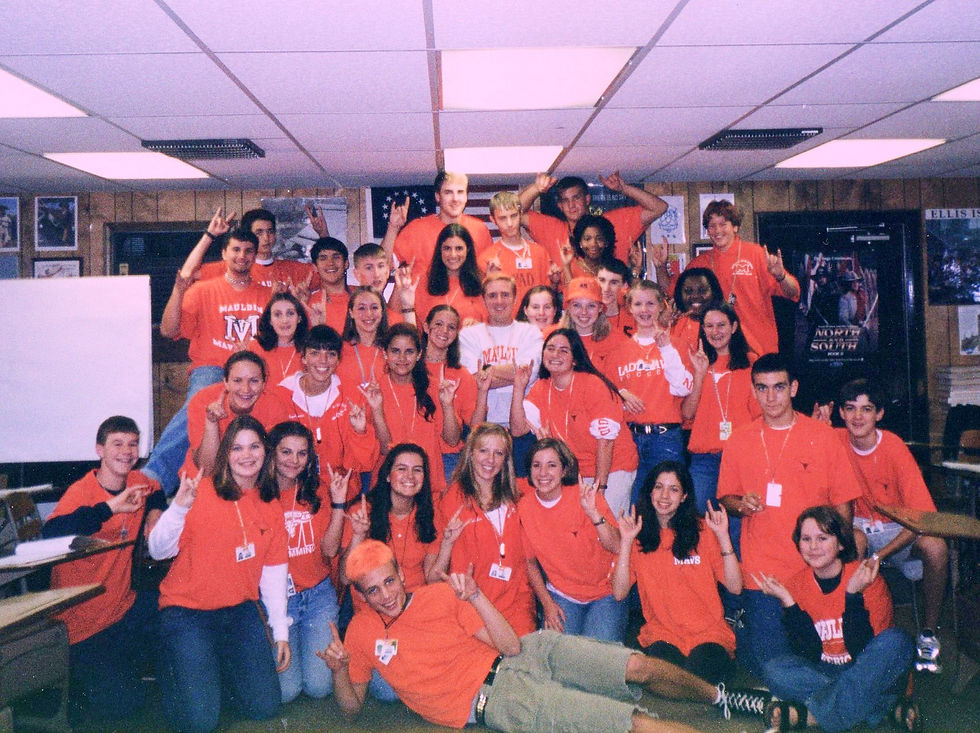The Imagination Age: Redefining the Future of Education
- Thomas Riddle

- Oct 1
- 4 min read
The future will belong to those who take what they know and imagine what could be.

For much of the last century, schools reflected the needs of the Information Age. Teachers focused on delivering knowledge, students concentrated on memorizing it, and assessments measured how well they could recall and apply facts. That system made sense when information was scarce and access to it gave learners an advantage.
But the world has shifted. Information now surrounds us. A student can find facts instantly with a phone, and artificial intelligence can write essays, solve equations, and generate ideas at lightning speed. Knowledge still matters, but it is no longer the scarce commodity it once was. The real challenge is how students use that knowledge—how they connect it, interpret it, and shape it into something new. That is the work of the Imagination Age.
From Memorization to Meaning
The traditional emphasis on memorization is losing its value. Machines can retrieve information faster and more accurately than humans. What students need today is the ability to apply knowledge in creative and meaningful ways. Tony Wagner calls creativity, problem-solving, and adaptability the “survival skills” of this century. They are not enrichment skills; they are essential.
Think of a classroom lesson on state capitals. Decades ago, memorization itself carried weight. Today, the real learning comes when students analyze how geography shapes history or when they design a way to teach younger children about the stories behind those places. The facts are still important, but imagination is what makes them relevant.
Imagination as Literacy
Reading and writing remain the foundation of education. Students need to interpret texts with care, separate truth from misinformation, and express their ideas with clarity. Yet literacy today extends further. Students must also be able to imagine possibilities and give them form.
When a student studies Martin Luther King Jr.’s “I Have a Dream” speech, they learn history and rhetoric. When they write and deliver their own speech about justice in today’s world, they practice literacy combined with vision. That combination helps students discover both their voice and their responsibility.
Learning That Feels Alive
Imagination grows when students see their learning connected to life. Project-based learning, design thinking, and maker-centered approaches bring this to the classroom.
I’ve seen elementary students design accessible playground equipment after interviewing classmates about their needs. I’ve seen high school students use 3D printers to create prosthetic hands for children in their community. These are powerful examples of students applying math, science, writing, and empathy all at once. Research on project-based learning confirms that students in these environments remember content longer and develop stronger problem-solving skills. But even more importantly, they discover that their learning matters.
The Power of Story
Stories turn knowledge into meaning. Neuroscience research tells us that our brains hold onto narratives far more effectively than isolated facts. But educators know this instinctively: stories are what students remember.
A math unit can become a story about designing a community garden. A history lesson can be framed as a constitutional convention where students argue for competing visions of a new nation. An English class can explore the Hero’s Journey through Star Wars and Black Panther, then invite students to write their own stories of growth and resilience. Stories draw students into the content and give it emotional weight.
Teachers as Designers of Wonder
In the Imagination Age, the role of the teacher is expanding. Teachers are not only experts in content. They are designers of experiences that invite curiosity and create lasting impact.
A science teacher might lead students in building ecosystems that evolve over time. An art teacher might help students paint murals that tell the story of their community. An economics teacher might guide students as they design small businesses and present their ideas to local leaders. These classrooms feel alive. They remind us that school can be a place where wonder happens every day.
John Hattie’s research confirms that relevance and engagement are key drivers of student achievement. When classrooms are designed around imagination, students show up differently. They invest themselves. They lean into the learning. They see the possibilities that lie ahead.
Preparing Students for What Comes Next
The future demands this kind of preparation. A 2023 McKinsey report estimates that nearly half of workplace tasks could be automated in the coming decade. Machines will take on repetitive and technical work, but they cannot imagine. They cannot empathize. They cannot dream.
Schools that cultivate those human strengths prepare students not only for future jobs but also for future leadership. Reading, writing, and mathematics remain the base, but imagination builds upon them and gives students the confidence to navigate uncertainty.
A Call to Educators
The Information Age trained students to handle a world overflowing with facts. The Imagination Age asks something deeper: the courage to wonder, to invent, and to shape possibilities.
Educators now hold the keys to more than simply content delivery. They can open doors to curiosity and guide students into spaces where questions matter as much as answers. Schools can become places that feel alive with experimentation, where learning is not simply about retention but about transformation.
Knowledge remains vital. What changes is how that knowledge is used. The future will belong to those who take what they know and imagine what could be.
References
Hattie, J. (2009). Visible learning: A synthesis of over 800 meta-analyses relating to achievement. Routledge.
McKinsey Global Institute. (2023). Generative AI and the future of work in America. McKinsey & Company.
Wagner, T. (2008). The global achievement gap: Why even our best schools don’t teach the new survival skills our children need—and what we can do about it. Basic Books.




Comments